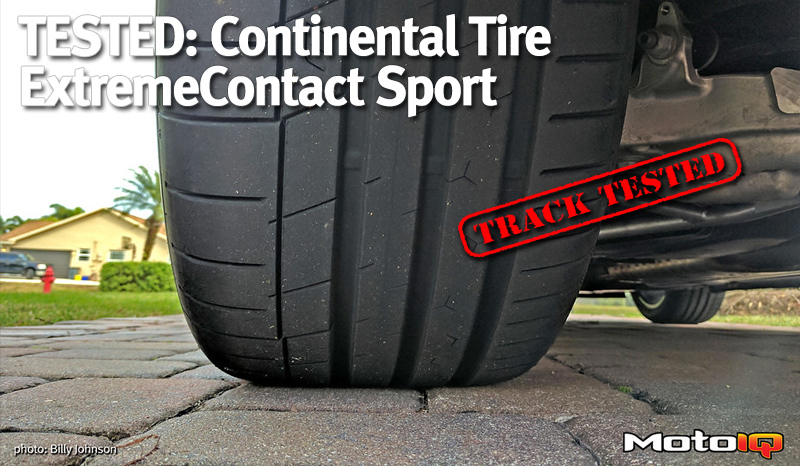
The 255/40-19 front ExtremeContact Sport weighed in at a light 25.5lbs.

The larger 275/40-19 rear ExtremeContact Sport was a handful of pounds heavier at 29.9lbs, which is still on the lighter side of most tires out there.
On Track Testing
To put the new ExtremeContact™ Sport to the test, we mounted them to the same 2016 Mustang GT California Special that we used in the Project E90 M3 vs 2016 Mustang GT article. We used the same OEM sized 255/40-19 front tires and 275/40-19 rear tires for a proper comparison to the ExtremeContact™ DW, which were also brand new during the test against the M3.
South Florida was giving us consistent 80*F winter days, so we hit the road and drove up to Palm Beach International Raceway (PBIR) for our comparison test. If you haven’t read the previous M3 vs Mustang article, PBIR is a great test track with a long straight to test acceleration and braking, as well as a mixture of long sweeping corners which act like skidpads to test lateral Gs, combined loading of trail-braking and power-down abilities, as well as a few transitions to test the transient and steering response of cars and tires. All of this makes PBIR and excellent track to test cars and tires.
Once out on track, the improvement in steering response was immediately noticeable. Turning into a corner, the ExtremeContact™ Sport responded immediately without the vagueness and delay of the sidewalls deflecting in the old DW. The new Sport made the entire chassis come alive with more precision, response, and grip. Trailing the brakes into the corner, the combined grip (braking and cornering) was the next thing that really stood out. I had the confidence and grip to drive into the corner harder and carry higher entry speeds.
Mid-corner, the increased grip and precision made hitting apexes effortless. The tread squirm of the DW is virtually eliminated, and the tire responds with more of the character of a nearly-slick “R-compound” tire than the DW. Rolling onto the throttle, the Sport’s increased combined loading (now cornering and acceleration) was increased just as much as corner-entry. This allowed me to get on the throttle sooner, and the tire was more consistent, stable, and predictable than the DW.
Due to the E90 M3’s weakness and need of combined loading grip, the new Sport would greatly improve the performance of the M3. The new Sport is very communicative though the steering and notifies the driver of the limit with a slightly deeper howl than the higher pitch screech of the DW. The breakaway characteristics of the Sport was predictable, smoother, and had more grip past the limit than the DW.
Overall, the subjective characteristics of the ExtremeContact™ Sport felt more like an “R-compound” with a more aggressive slick tread pattern than it does the DW. Continental made a massive leap improving the steering response, grip, predictability, and on-track durability -all of which was their goal and they definitely accomplished this.
The ExtremeContact™ Sport is a completely different tire than the DW.
Crossing the line the ExtremeContact™ Sport-equipped 2016 Mustang GT put down a time of 1:31.869, which was 1.083 seconds faster than it did under similar track conditions on the older ExtremeContact™ DW.

While brake fade and glazed pads affected some of the braking performance of the lap, like Turn 1, it is obvious by looking at the speed trace the new ExtremeContact™ Sport greatly improves mid corner speed, grip, and allowed for higher entry speeds and similar if not better exits. Turn 5 shows a significant reduction of entry understeer, a higher mid-corner speed and a much earlier full throttle point.

Looking at the lateral and longitudinal G-forces reveals an increase in lateral G’s across the board. Brake fade hurt the consistency and outright braking performance of the tire, so it’s not worth reading into that much.



